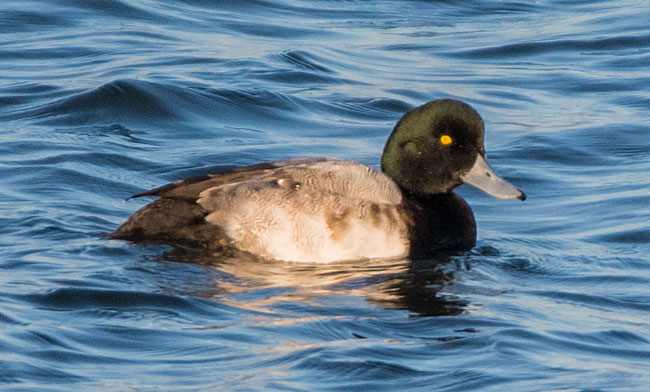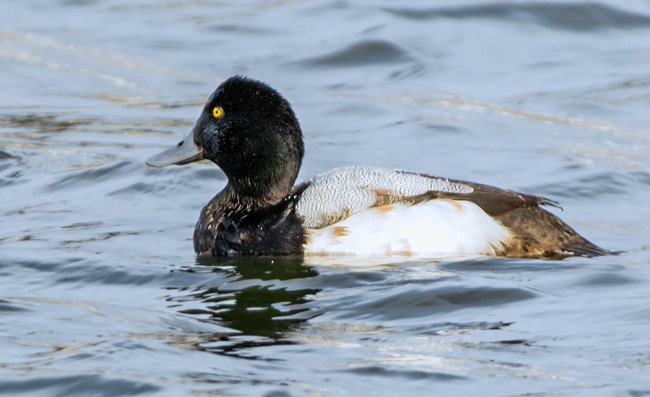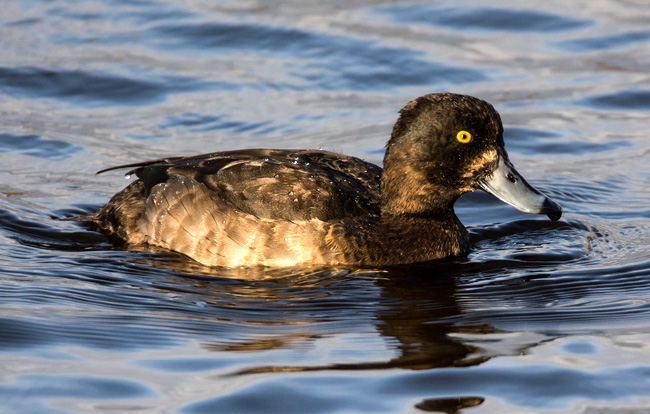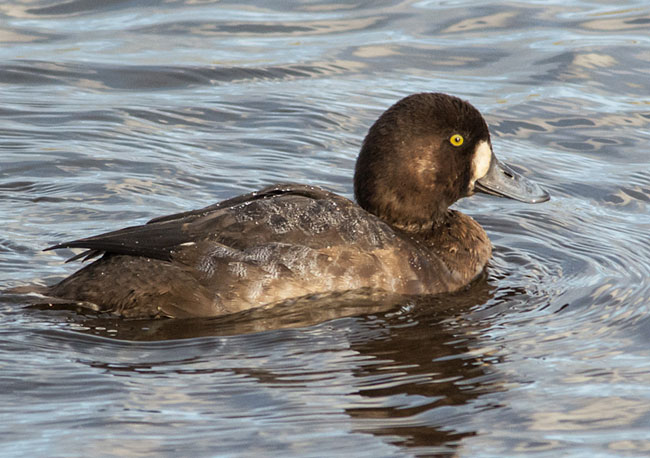
|
Scaup
|
||
|
Taken at Musselburgh on
14th December 2018 using Nikon D500 with Sigma 600 mm zoom lens.
|
||

| Taken at James Hamilton
Heritage Park on 13th January 2017 using Nikon D5200 with Sigma 600 mm zoom lens |

| Female Taken at Strathclyde Park on 29th December 2016 using Nikon D5200 with Sigma 600 mm lens. |

| Female 1st
Winter Taken at Banton Loch on 10th December 2015 using Nikon D5200 with Sigma 150-500 mm zoom lens. |

| Scaup. |
| Species: Order: Family: Local Names: |
Aythya marila. Anseriformes. Anatidae. Greater Scaup. |
| Site Of Nest: Food: Plumage: Breeding Period: Eggs: |
Near water, typically on islands in northern
lakes or on floating mats of vegetation. Aquatic molluscs, plants, and insects. Male: Dark head with a green sheen, a black breast, a light back, a black tail, and a white underside. The belly and flanks are a bright white. Its neck, breast, and tail feathers are a glossy black, while its lower flanks are vermiculated gray. The upper wing has a white stripe starting at the speculum and extending along the flight feathers to the wingtip. Female: Brown body and head, with white wing markings similar to those of the male but slightly duller. It has a white band and brown oval shaped patches at the base of the bill, which is a slightly duller shade of blue than the drake's. Legs and feet of both sexes are gray. Juvenile greater scaup look similar to adult females. In Summer in Alaska, northern Canada, Siberia, and the northernmost reaches of Europe. Migrates in winter to North America, Europe, and Japan. 6 - 9. Olive-buff colored. |
| Voice Courtesy Of Xeno Canto |
